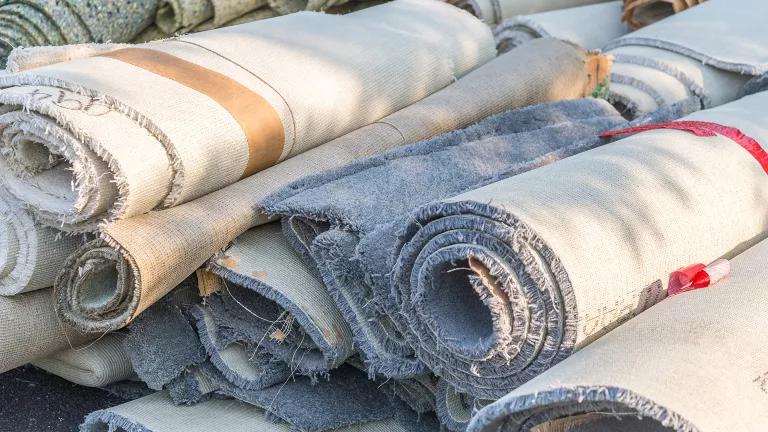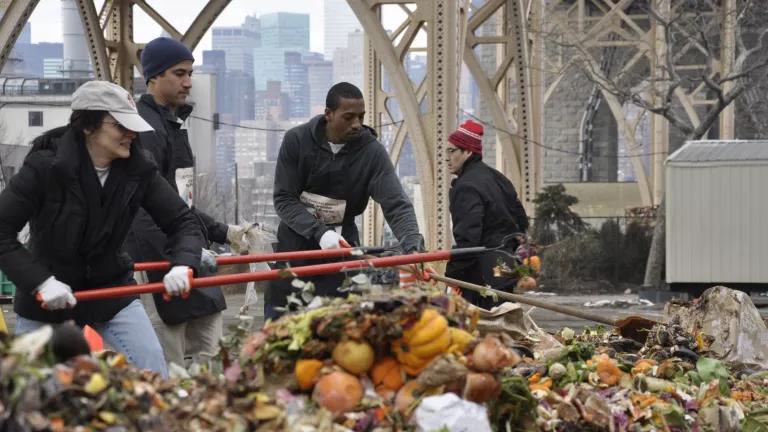Hochul Signs Law Directing Manufacturers to Weave NYS Carpet Recycling Program
Manufacturers will soon be required to take responsibility for the end-of-life management of carpets sold throughout the state.

Dreamstime
Governor Kathy Hochul has signed legislation making New York only the second state in the nation to require that carpet manufacturers establish a convenient program for collection and recycling of discarded and unused carpeting. California adopted the first such program in 2010.)
Under legislation championed by State Senator Brian Kavanagh and Assemblymember Steve Englebright, manufacturers will soon be required to take responsibility for the end-of-life management of carpets sold throughout the state.
This new law provides another piece of the puzzle needed to handle wase more sustainably and take a bite out of the climate crisis.
Beginning in January 2026, carpet sales in New York will be prohibited unless the producer of such carpet is participating in an approved industry-wide plan for carpet recycling or has established its own program for carpet collection, approved by the State Department of Environmental Conservation.
Carpeting is one of the most problematic household items to dispose of for residents and businesses. More than 3.9 million tons of carpet and rugs are discarded every year in the United States, according to the Product Stewardship Institute. These discards are bulky and costly to collect. Most carpets and rugs are composed of synthetic fibers made from climate-destroying petroleum (e.g., nylon, polypropylene, polyester). Carpeting often contains toxic chemicals used as adhesives and stain-repellents. And, presently, nearly all discarded carpets in New York are sent to environmentally troublesome landfills or incinerators.
Under these circumstances, requiring manufacturers to take responsibility for setting up convenient systems to collect, transport, process and recycle discarded carpeting, as the Kavanagh-Englebright legislation does, makes a great deal of sense. According to the State Department of Environmental Conservation, the new program will save municipalities across the state millions of dollars a year in reduced disposal costs.
The new legislation establishes carpet recycling performance goals the industry is required to achieve over time. The first goal is for 30% carpet recycling in five years, with at least 10% of the recovered materials being used as recycled content for new carpets. The final goal, to be achieved by the 15 -year mark, calls for 75% carpet recycling, with at least 40% of recovered materials being used as recycled content for new carpets.
Significantly, the legislation also bans PFAS—the toxic "forever chemicals"—from carpeting sold in New York, beginning January 2025.
There was a last-minute plastics industry push to insert into this legislation language that would have expanded the definition of “recycling” to include so-called “chemical recycling.” These are environmentally problematic industrial processes that turn plastic into fuel or plastic into chemicals. Fortunately, those efforts were turned aside and the legislation that was signed by Governor Hochul included the appropriate definitions as originally passed by the Senate and Assembly.
Of course, the most sustainable floor coverings are those that are composed of natural, rather than petroleum-based, fibers. That’s why the best environmental choice remains carpeting and rugs that are made from wool, or such plant-based fibers as seagrass, jute or sisal.
Still, the new statute is a positive development and positions New York State to provide continuing environmental leadership on other waste-related problems, such as ever-increasing amounts of single-use packaging, in the year ahead.
The Product Stewardship Institute, which has been a leading force in advancing producer-responsibility legislation, played a significant role in advancing this legislation in New York, as did a broad coalition of environmental groups and waste reform advocates, including Environmental Advocates of New York, Citizens Campaign for the Environment, and the New York League of Conservation Voters. NRDC, Beyond Plastics, and NYPIRG were among those groups engaged in the hectic, end-of-session negotiations.
This legislation is a fitting capstone to the remarkable career of outgoing Assemblymember Steve Englebright, who has been an environmental champion in Albany for decades. We also greatly appreciate the tenacity of Senator Brian Kavanagh, who fortunately will be returning to the Senate in 2023 and once again providing environmental leadership.
Finally, we thank Governor Kathy Hochul for signing this legislation and look forward to working with her and her dedicated staff on a wide range of environmental matters in the new year—to build New York State’s track record at the forefront of advancing sustainability and combatting the climate crisis.




